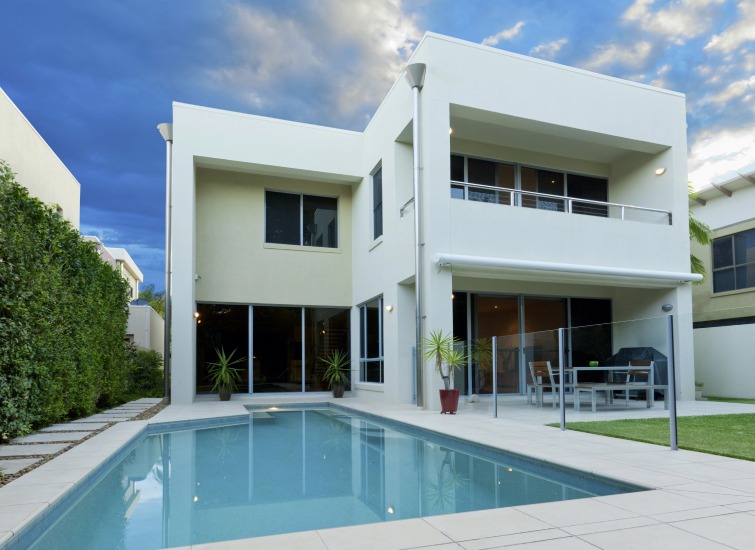A Higher Capital Gains Inclusion rate Could Lead to Less Housing

Advertisement: Click here to learn how to Generate Art From Text
Benjamin Franklin, American statesman, philosopher and political thinker, once said ” “Nothing is certain except death and taxes.”
Even more than two hundred years later, his famous words still ring true.
Overtaxation is a major problem for new housing. It increases the cost of new housing and makes it difficult for developers and builders to build homes that people can afford.
A report commissioned by RESCON 2023 revealed that taxes, fees, and levies on a new home now account for a staggering 31 per cent of its price tag in Ontario. Add-ons are on the rise, and have contributed to a housing shortage that is terrible.
The Greater Toronto Area has the highest taxes and development charges on new housing in North America. The development charges on new homes, which are similar to a hidden home ownership tax, have increased by 42 per cent in a little over a year. This is killing the housing market.
Altus Group conducted a study a few years back that found government fees, taxes, and charges on a new, average single-family home were three times more expensive in the GTA than in major U.S. cities.
Change raises tax rate
As if that wasn’t enough, earlier this year the federal government introduced tax changes that will increase the amount of taxes paid when a secondary property like a cottage is sold.
This is a change worth exploring as higher taxes may lead to less housing being built and fewer rental units.
Individuals’ capital gains inclusion rate has increased to 66.67 per cent from 50 percent as of the 25th of June for the portion of capital gain that exceeds $250,000. The amount less than $250,000 is still taxed at 50%.
This means that if you have a capital gain from a second home that is above the threshold amount, you’ll pay a higher tax rate.
If multiple people own a property, each person will be able to access their $250,000 threshold.
The changes were first proposed in Budget 2024. On June 10, the government presented a Notice of Ways and Means motion in Parliament, which began the legislative process for implementing the rate.
Calculations show that a person who has a capital profit of $500,000 due to the sale of a second property would pay the inclusion rate of 50 percent, or $125,000 on the first $250,000. And the inclusion rate of 66.67 percent, or $166.675, on the second $250,000. The taxable capital gains would increase an individual’s total income by $291,675.
Under the old system, an individual would have paid a 50-per-cent inclusion rate on the entire $500,000 capital gain, which would have amounted to $250,000 in income – $41,675 less.
A capital gain is the value increase of an asset or security between the time the asset or securities was purchased and the time they were sold.
Secondary residences can be affected
Many Canadians are going to feel the full impact of this tax change if they sell a second residence, cottage, or rental property.
This is why I believe that raising the capital gains rate was a poor idea, especially in a time of declining housing supply, affordability and investment. Let me explain.
Canadians often purchase second homes as a means of recreation or extra income, and then sell them to supplement their retirement income. They will feel the effects of these changes in their pocketbooks. The changes will have a significant impact on their nest egg and the economy as a whole. They may also be less inclined to purchase or build second homes for investment purposes and rent them out.
Private landlords purchase rental properties in large numbers across the country. The higher inclusion rates are an additional hurdle. The tax change will be negative as they are now subjected to a higher rate of inclusion for capital gains over $250,000.
The federal government also has a Residential Property Flipping Rule. If a property is sold less than 12 consecutive months after it was purchased, any profits earned with be 100 per cent taxable as business income, even if the property is considered an individual’s principal residence.
Currently, up to 30% of rental units may be provided by private landlords. The new rules are designed to discourage this practice during a period when cities are experiencing an acute shortage of rental housing, which has led to higher rent prices.
Toronto’s average rent for one-bedroom apartments is now over $2,500 per month. Two-bedroom units are often more than $3,200. People are leaving our cities and many are heading west or south of the border because they can’t afford to live where they work.
It makes no sense to raise the capital gains inclusion rates and create a barrier that could slow down construction of housing or rental units at a time when more supply is needed.
New housing already has high taxes, fees, and levies. The situation will only get worse if the capital gains inclusion rates are increased.
The path we’re on is not sustainable.
Richard Lyall is the president of Residential Construction Council of Ontario. He has been representing the building industry in Ontario, Canada since 1991. Contact him at [email protected].

‘ Credit:
Original content by www.canadianrealestatemagazine.ca – “Hiking The Capital Gains Inclusion Rate Could Lead To Less Housing”
Read the full article here https://www.canadianrealestatemagazine.ca/news/hiking-the-capital-gains-inclusion-rate-could-lead-to-less-housing/




